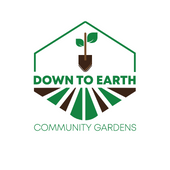How to create a few easy garden beds in a Sunday Afternoon.
If you want to turn a barren lot into a food oasis, you’ve got to start from the ground up.
Sheet mulching is an easy way to start. You start with a biodegradable weed barrier like cardboard, and from there build a thick, layered substrate for your garden with compost and mulch. As the materials break down, worms move in, softening the soil below, and creating a healthy, aerated planting bed where once there was compacted, rocky soil.
We transformed our rocky, glacial till filled desolate lot into a modern-day Garden of Eden with this and other permaculture methods. For the visual learners out there, check out the pictures throughout this blog and scroll down to the easy DIY steps below.

Our supervising team hard at work, not only are they total task masters, they are also micro-managing me to an early grave….
The Living Lab Today:

We still have lots of work to do as we finish sheet mulching and expanding the garden. Our goal is to double our harvest from last year and donate 4,000 lbs!
So, without further ado, here’s our simple 9-step method for sheet mulching!
Sheet mulching combines soil improvement, weed removal, and long-term mulching in one fell swoop.
This technique, also known as lasagna gardening, can build remarkable soils in just a few years. There are several key components.
- First, a weed barrier like cardboard is laid down to smother weeds. In theory (and quite often in practice) the cardboard decomposes after the weeds have all died and turned into compost.
- The second ingredient is to add compost, or build a layered compost pile that will enrich your new garden bed.
- The third step is to add a thick layer of mulch on top, to keep new weeds from getting established.
I have had great results with sheet mulching, although sometimes the first year is a bit rough on the body as we get the work done. You can use sheet mulching to turn lawns or weedy waste areas into gardens in just a few hours, or even to build soil from scratch inside built frames for raised beds. Sheet mulch can range from just a few inches thick to 2 feet or more, depending on how bad your soil is and how much raw material you have available (it will cook down and settle quite a bit).
Nine Simple Steps to Sheet Mulching
- Mow or cut your lawn, weeds, or other vegetation right down to the ground.
- Plant any crops that will require a large planting hole (including woody plants, perennials in large pots, and large transplants).
- Add soil amendments (as determined by your soil test). We use egg shells, coffee grounds and banana peels when necessary.
- Water the whole area thoroughly. You are going to be putting a layer of cardboard or newspaper over it, and rain and irrigation won’t soak through very well until that weed barrier breaks down. Water also helps the decomposition process get going.
- If you have compost materials that may contain weed seeds (like fresh manure, leaves, or hay), spread them in layers on the ground. Put a dry, carbonaceous layer of hay or shredded leaves below any manure layer. Avoid thick layers, and make sure to get a good carbon-to-nitrogen ratio just as if you were building a compost pile. Water this layer well.
- Lay down a weed barrier. I prefer to use large sheets of cardboard from appliance stores, because these last longer and are quicker to lie down. You can use layers of wet newspaper too. Make sure to have a 4- to 6-inch overlap where sheets meet so buried weeds can’t find a route to the surface. If you have already planted crops, or have other preexisting plants, don’t mulch over them. Cut holes in the cardboard to make some breathing space for each plant (or leave some room around each plant when laying newspaper).
- Now you can add your weed-free organic materials. I like to keep it simple, and just add a nice layer of compost. You can also do some sheet composting here, alternating layers of nitrogen-rich materials like fresh grass clippings with carbonaceous materials like weed-free straw.
- Now you add your final top mulch layer, at least 3 inches thick. Water the whole bed thoroughly once again. Your sheet mulch bed is complete.
- You can plant right into your bed if you like. If you are planting seeds, be sure to water regularly, as compost on top of cardboard can dry out quickly.








